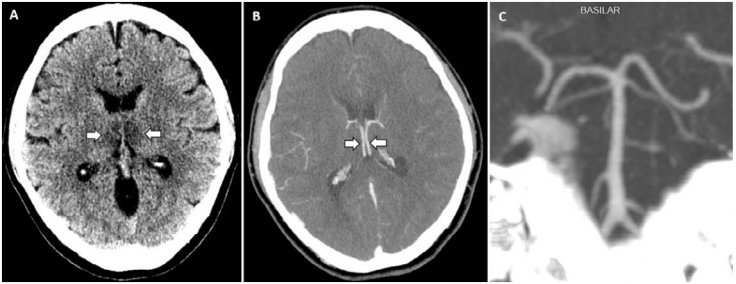Ever since the deadly COVID-19 began spreading across the world, physicians have been continually learning about its various symptoms and secondary complications such as pneumonia that it causes. However, doctors have reported what could be the first case of coronavirus-related acute necrotizing encephalopathy (ANE).
In a case report published in Radiology, doctors from Henry Ford Health System discussed the case of a 58-year-old female who tested positive for COVID-19 and also developed ANE, a rare brain disease often found in children suffering from influenza. This report is the first known published case pointing towards a link between encephalitis and COVID-19.
"We report the first presumptive case of COVID-19–associated acute necrotizing hemorrhagic encephalopathy, a rare encephalopathy that has been associated with other viral infections but has yet to be demonstrated as a result of COVID-19 infection," the researchers wrote.

What is ANE?
Acute necrotizing encephalopathy (ANE) is a rare yet aggressively progressing disease of the brain. It often develops as a secondary infection to other viral infections such as influenza and herpes. Along with the symptoms of the viral infection, symptoms such as disturbance of consciousness and seizures follow.
If not treated, it can quickly progress to loss of neurological functions, liver complications and finally coma. It is mostly reported in children. However, adult cases are not unheard of.
An unheard of COVID-19 complication
The patient, an airline worker, suffered from cough, fever and muscle ache — all symptomatic of COVID-19 — for three days. She was found to be confused, lethargic and disoriented, and was taken to the hospital in an ambulance on 19 March. Initial tests proved negative for influenza. However, a test for COVID-19 showed that the woman was afflicted with the disease.

What the doctors found odd was that the woman continued to be lethargic. Cerebrospinal fluid (CSF) analysis showed no bacterial growth after three days and it tested negative for herpes simplex viruses (1 and 2), varicella zoster virus (chickenpox) and the West Nile virus. This prompted the doctors to order repeat CT and MRI scans. In the MRI scan, abnormal lesions in both the temporal lobes and thalami — parts of the brain associated with consciousness, memory function and sensation — were found.
The scan results established the doctors' initial suspicions and the diagnosis of ACN was confirmed. "The [MRI] team had suspected encephalitis at the outset, but then back-to-back CT and MRI scans made the diagnosis," said Dr. Elissa Fory, a neurologist and member of the diagnostic team, in a statement.
Re-looking diagnosis
The most common manifestations of the coronavirus infection are cough, shortness of breath, fever, and severe body aches, among others. One of the most common complications or secondary infections caused by the infection is pneumonia, with conjunctivitis and heart damage reported in a few.

However, the findings of the report called attention to the need for reformulating diagnostic standards to encompass other symptoms and complications. The doctors highlighted in the report that there is increasing evidence to suggest that certain patients may suffer from cytokine storm syndromes (inflammatory response to an infection), which ANE is also characterized by.
"This is significant for all providers to be aware of and looking out for in patients who present with an altered level of consciousness. We need to be thinking of how we're going to incorporate patients with severe neurological disease into our treatment paradigm," concluded Dr. Fory.









